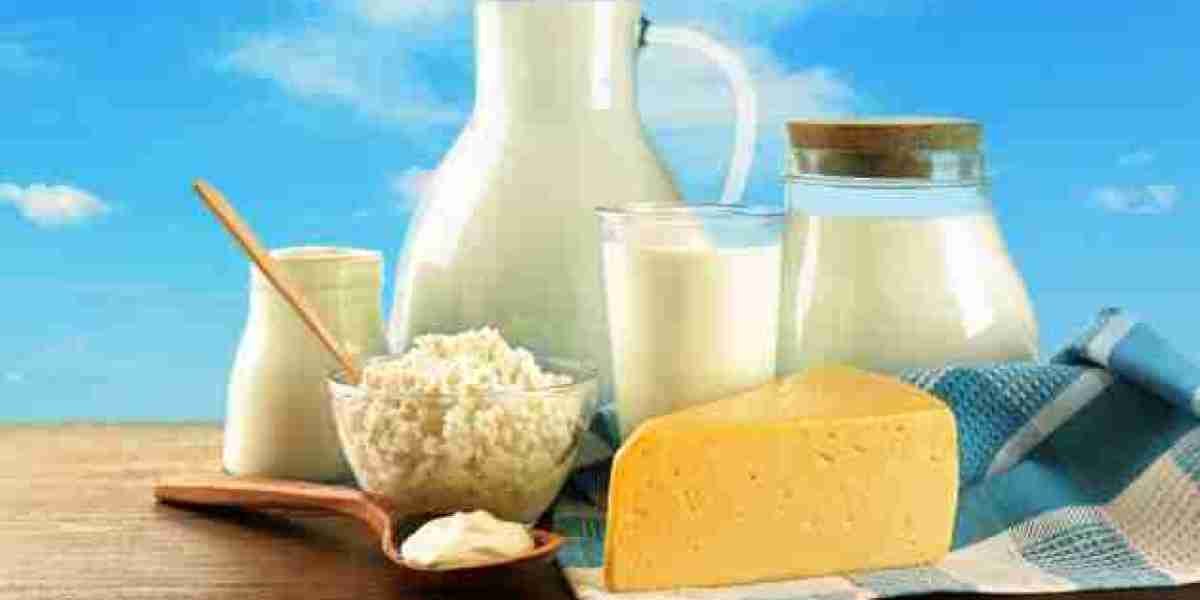Introduction
The UHT Dairy Products Market is expanding globally due to growing demand for long-shelf-life, convenient dairy options. However, despite its rapid rise, the market faces several challenges that could hinder long-term growth. Chief among these are regulatory complexities across regions and increasing scrutiny from health-conscious consumers about nutritional degradation during UHT processing. This article delves into these challenges, their impact on manufacturers, and the potential strategies to address them.
Regulatory Complexity Across Regions
One of the primary barriers in the global expansion of UHT dairy products is navigating the web of international food safety and dairy regulations. Every country enforces different policies on milk sourcing, sterilization standards, permissible additives, and labeling norms. This regulatory fragmentation adds to manufacturers’ operational complexity and increases compliance costs.
For example:
In the European Union, UHT dairy must adhere to stringent EU food safety protocols, labeling requirements, and composition regulations.
In the United States, regulations are governed by the FDA and differ significantly from those in Asia and Europe.
In developing countries, there’s a mix of underdeveloped regulations and emerging compliance frameworks that often lack uniformity, adding ambiguity.
Manufacturers operating in multiple geographies must tailor their formulations, packaging, and certifications based on regional laws, which can delay product rollouts and increase costs.
Import and Export Limitations
For brands looking to expand globally, import restrictions and tariffs on dairy products can also act as barriers. In countries where local dairy industries are heavily subsidized, foreign UHT products may face steep tariffs, making them uncompetitive.
Additionally, sanitary and phytosanitary (SPS) requirements further complicate trade. These standards demand rigorous documentation and inspections, which can discourage smaller brands from exploring international markets.
Nutritional Retention: A Growing Concern
Ultra-High Temperature (UHT) processing involves heating dairy products to temperatures above 135°C for 2–5 seconds to eliminate microbial content and extend shelf life. While effective for safety and storage, this process raises concerns about the preservation of essential nutrients such as:
Vitamins (especially B-complex and C)
Enzymes and probiotics
Protein bioavailability
Many nutritionists and health-conscious consumers argue that UHT treatment may degrade some of the sensitive nutrients naturally present in fresh milk. Although macronutrients like fat, protein, and calcium remain relatively stable, micronutrient loss remains a topic of concern.
Consumer Perception and Preference for Fresh Alternatives
A significant portion of consumers, especially in developed countries, still prefer fresh milk over UHT-treated products due to taste differences and the perception that fresh milk is healthier. This perception challenge affects brand positioning and limits market penetration among certain demographics.
In blind taste tests, UHT milk is often perceived as having a “cooked” or caramelized flavor, which may deter repeat purchases from first-time consumers. Overcoming this barrier requires consumer education and product innovation to improve taste without compromising safety or longevity.
Labeling and Transparency Requirements
As consumers become more health-aware, transparency in labeling is increasingly demanded. Brands must disclose processing methods, nutritional content, and ingredient sourcing clearly on packaging. However, regulations around labeling differ across regions, making it difficult to maintain consistent messaging globally.
Additionally, any fortified variants (e.g., vitamin-D enriched UHT milk) must meet specific documentation and health claim substantiation standards before being approved for sale, especially in markets like the EU and USA.
Packaging Challenges and Environmental Concerns
Although not directly linked to regulatory or nutritional concerns, packaging is another factor contributing to consumer skepticism. UHT dairy products are usually packaged in multilayer cartons, plastic bottles, or aseptic containers. The use of non-recyclable or difficult-to-recycle materials invites criticism from environmentally conscious consumers and governments alike.
Upcoming regulatory changes in packaging laws—such as single-use plastic bans or mandates for biodegradable packaging—require manufacturers to rethink their packaging solutions, which may increase costs and disrupt existing supply chains.
Strategies to Address Market Challenges
To navigate these challenges, manufacturers must adopt proactive strategies including:
Regulatory Expertise: Invest in regulatory teams or consultants to ensure swift compliance across regions and streamline international expansion.
Consumer Education: Run transparent marketing campaigns to inform consumers that UHT dairy retains core nutrients and is a safe, viable alternative to fresh milk.
R&D for Nutrient Retention: Innovate in UHT technology by exploring gentler heating techniques or micronutrient reinfusion methods to retain and/or restore nutritional value.
Taste Enhancement: Improve flavor profiles through processing advancements or natural flavor additions without compromising nutritional integrity.
Sustainable Packaging Innovation: Explore biodegradable and recyclable aseptic packaging to align with eco-conscious regulatory trends and consumer preferences.
The Role of Third-Party Certifications
Obtaining third-party quality and health certifications can also enhance credibility and consumer trust. Certifications from agencies such as USDA Organic, EU Organic, FSSAI (India), or Halal/Kosher organizations help brands establish transparency and meet diverse market requirements.
Additionally, certifications on environmental sustainability, like FSC-certified packaging or carbon-neutral operations, can further distinguish a brand in competitive markets.
Conclusion
Despite the expanding footprint of the UHT Dairy Products Market, regulatory challenges and nutritional concerns remain significant hurdles. As consumers demand more transparency, better taste, and nutrient retention, brands must respond with innovation, education, and global compliance strategies.
Success in this sector requires more than just a long shelf life—it demands a commitment to consumer trust, product integrity, and sustainability. Companies that address these concerns effectively will be well-positioned to lead the market in the coming years.

![Alternatives to Twitch: Top 12 Platforms [2023]](https://pungi.b-cdn.net/upload/photos/2025/02/OsUz21VUKFhXHuXnaKiQ_26_954746e1274420e0250dbce553c495c8_image.png)

